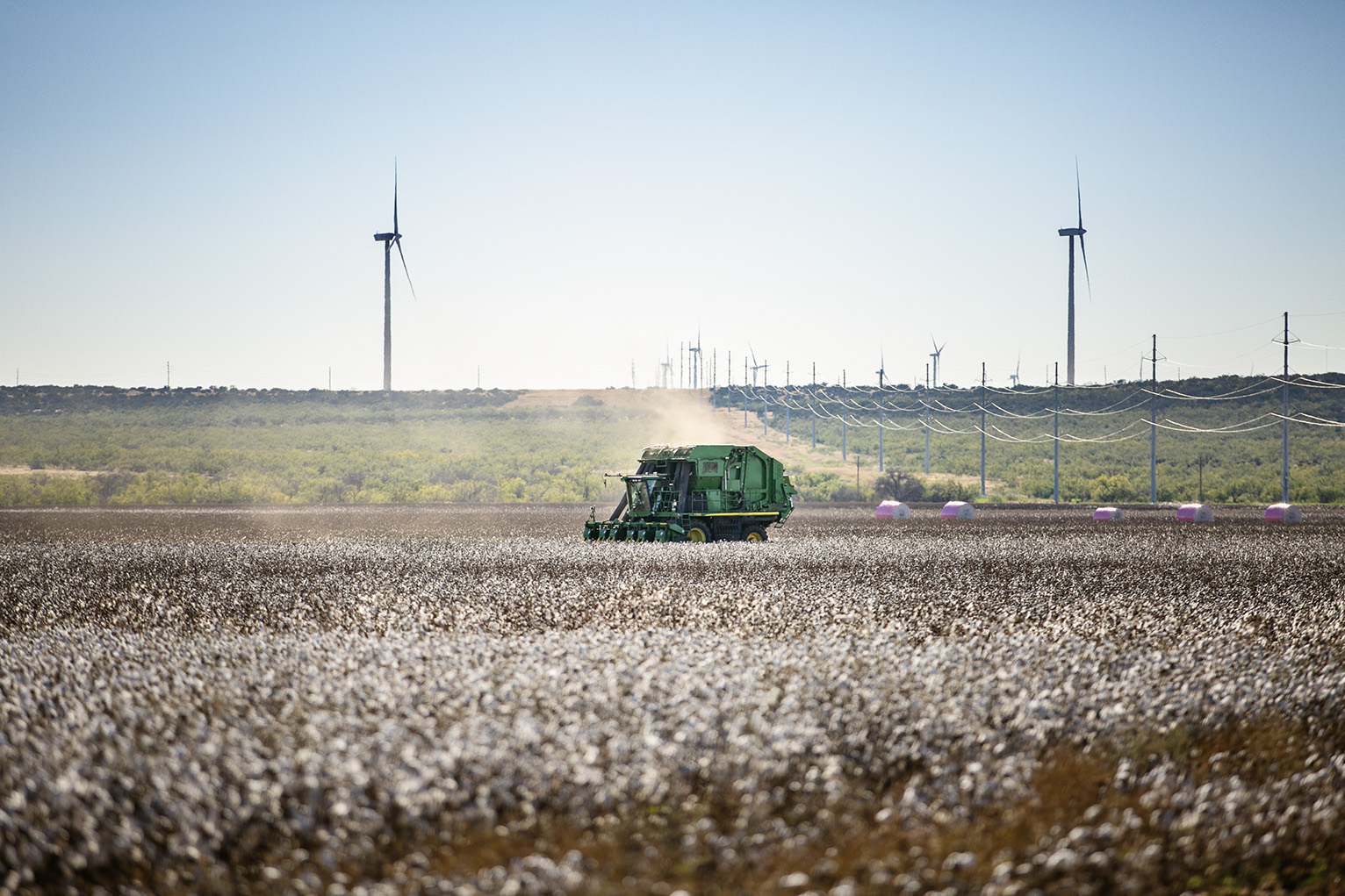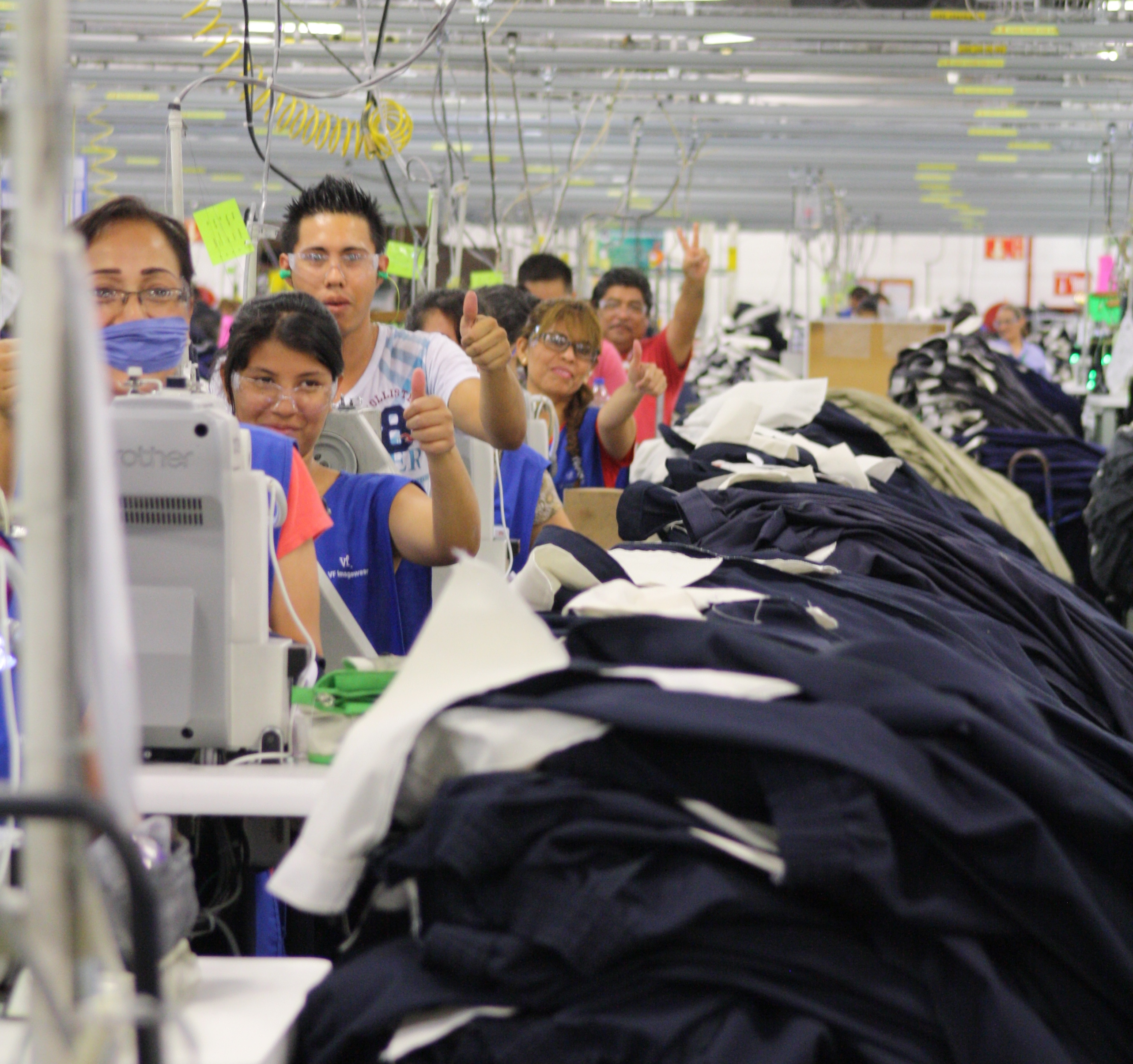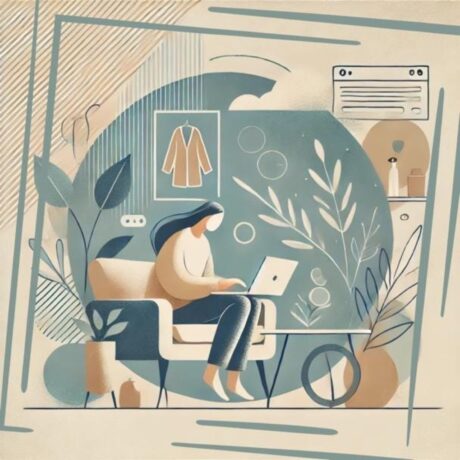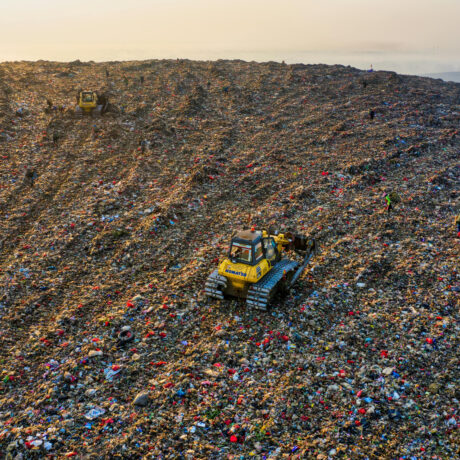The Future of Denim, Part #3: Waste not; water not – Innovation
Neil Diamond’s ‘Forever in blue jeans’ nostalgia is an ideal which comes at a cost. Consistent colouration of recycled denim can be difficult to achieve and requires additional energy and water. Put bluntly, denim is decadent in its use of water.
According to Levi Strauss, 3,781 litres of water are used during the production and use phase of one pair of 501® jeans and 33.4 kg of CO2 is created throughout its lifetime. This includes growing cotton, processing the denim and washing at home. Minimizing these impacts requires producers to improve technology and consumers to think about how they care for their denim. To this end, MADE-BY created a wet processing benchmark that details the impacts from commonly used processing techniques and brings understanding and awareness to the impacts of this step in textile production.
Stemming from the insights of companies such as Jeanologia, MUD Jeans have developed an Ozone technology that can be used in place of water intensive stone washing, drastically reducing the water, energy, and chemical usage in the processing phase of jean production. The result is worn or faded looks without the negative environmental or health impacts. In Australia, researchers have created a way to make denim-dyed denim, with help from the H&M Foundation to scale and commercialise this technology to use recycled denim as a dye source.
In fact, MUD jeans was one of the first denim brands to build its business on sustainable principles and a pioneer in recycling cotton as well as re-using the water used in the dyeing process. Eva Engelen, responsible for CSR at MUD jeans, says:
“As a circular denim brand all MUD Jeans are made of at least 23% and up to 40% post-consumer recycled cotton, mixed with organic cotton. It is our goal to make jeans from 100% post-consumer recycled cotton and therefore step away from cotton cultivation. By using even more recycled cotton as a resource we will minimise our environmental and social impact further.
By using recycled cotton as a resource and making conscious product and production decisions MUD Jeans is able to obtain vast environmental savings. Each pair of MUD Jeans saves 5500 litres of water and emits 61% less CO2 compared with industry standards.”

Another denim brand to lead from the top is Wrangler.
“Innovation is at the heart of the Wrangler brand”, says Roian Atwood, Director of Sustainability for Wrangler. It started with the brand’s original innovations in 1947 and continues with their goals around water conservation and sustainable cotton.
Wrangler already leads the way in water saving and innovation , making it a central focus of their policy and research:
“Water use and wastewater are some of the biggest sustainability challenges in denim manufacturing, which is why we’re proud to have helped bring foam-dyed denim to our industry,” says Atwood. “We’re excited for other brands to follow in our footsteps, and virtually eliminate the water needed to dye blue jeans blue.”
Between 2007 and 2016, Wrangler saved over 3 billion litres of water in the finishing process alone and plans to save an additional 2.5 billion litres by 2020. After recognizing its potential to revolutionise the industry, the original rodeo workwear brand has developed a foam dye process which eliminates the use of water in the dyeing process. The innovation comes as Wrangler launch their Icons Indigood FW19 collection, this summer with a sustainable Indigo dye. Officially revealed to the press at their factory in Spain in early June, the team hail the collection as their “most sustainable jeans ever”. Eliminating their use of water in the dyeing process and using 60% less energy and making 60% less waste than conventional dyeing methods, the foam dyeing innovation will no doubt revolutionise this aspect of the denim manufacturing across the industry.
“This small collection is only the beginning”, the team states in the press release. “We’re working with denim mills in Asia and North America to bring this technology to a larger scale. Foam-dyed denim won’t just impact Wrangler’s supply chain, it will change our entire industry. We’re excited to be the the first brand to sell foam-dyed denim, but we’re even more excited that we won’t be the last”.
As regards the culture surrounding denim, Sean Gormley, creative director at Wrangler, whose Icon collection is also made from 20% recycled denim, says “we’re finding that buyers want to be able to give their customer a better, more sustainable product,” Gormley says. “Increasingly, you can’t call yourself a premium product unless your credentials are sustainable.”

Beyond cotton
If the DNA of premium denim brands is shaped by storytelling and heritage, then its lifeblood now depends on responsible innovation. Sustainability in fashion is no longer an ambitious idea, but a necessity, as shown by Levi’s innovation across its product lines, leading the charge with its Wellthread™ (sustainability-first) collection. Launched this year, the sustainably designed collection is modelled on four guiding principles: materials, people, environment, and process. For Spring/Summer 2019, those principles play out in a mixture of single fibres recyclability and value added through labour – cottonised hemp product.
The introduction of cottonised hemp is huge; not just for this collection but for the entire industry. Hemp crops require significantly less water to cultivate than cotton, with less than half the carbon footprint. However, the drawback with hemp to date has been that it’s a rough fibre, closer to linen than cotton. To solve this, Levi’s Wellthread™ collection has partnered with fibre technology specialists to develop a process to “cottonise” hemp, a method that softens the fibre—using very little energy or chemical processing—to make it look, and more importantly feel, almost indistinguishable from cotton.
“We know hemp is good for the environment, but it has always felt coarse,” says Paul Dillinger, VP of Product Innovation at Levi’s. “This is the first time we’ve been able to offer consumers a cottonised hemp product that feels just as good, if not better, than cotton.” The result is a casual and easy-going collection where every piece is fully recyclable —part of an ongoing collaboration with California surf brand Outerknown. Standouts include a Trucker Jacket and 511™ Slim jean made from cottonised Hemp blend (white colorway) and Refibra™ Tencel® denim blend (indigo colorway).
G-Star RAW has shown similar commitment to cleaning up cotton. Frouke Bruinsma , Corporate Responsibility Director G-Star RAW, says, “in 2006 we decided that sustainability needed to be integrated into the heart of our business and that’s when we officially started our Corporate Responsibility department. [… ] Because innovation is at the very core of our DNA, and sustainable innovations are naturally a part of that, we are actually always working on our next sustainable innovations and we see sustainability much more as an enabler to innovation rather than a hurdle”.
In recent years, G-Star RAW has launched capsules in numerous organic, recycled and nettle options as an alternative to regular cotton, recycling denim through post-consumer waste and launching a collection created out of plastic waste reclaimed from ocean shores. Speaking to me for this article, Bruinsma says “our biggest sustainable accomplishment to date is Our Most Sustainable Jeans Ever, which we launched last year, combining the cleanest indigo technology in the world, the most sustainable washing techniques, and using 100% organic cotton.”
She adds, “We were also the world’s first denim brand to collaborate with Archroma and create a collection of EarthColors® dyed jeans in 2017, a sustainable dye derived from recycled plant waste instead of petrol, traceable from earth to product. In July, we will introduce another range of EarthColors® styles including jeans, denim jackets, shirts, t-shirts and sweatshirts for both men and women.”
Raw denim – the benefits of mono fabrics
For the Slow Fashion movement, mono-fabric is always in style. While progressive, sustainable brands will no longer condone quick changing trends that create obsolete fashion on a monthly basis, champions of sustainable denim will be excited about a growing demand for mono-material jeans and raw denim. Heritage in style and spirit is making a comeback.
Raw denim is the godfather of all denim. It’s unwashed and characterized by its rigid structure and deep blue colour. In contrast, most of the jeans that we buy have been through a series of industrial washings to soften and add cosmetic effects to the trousers and add synthetics to improve stretch. Raw denim aficionados don’t wash their trousers for at least the first 6 months after purchase to develop a natural fade, custom-made by one’s own wearing. As you might have guessed, raw denim jeans need much less water in the production process, and the culture around raw denim lends itself perfectly to circularity. It’s all about retaining the value of the jeans for as long as possible through repair, re-wear and less washing.
Jade Wilting, Project Coordinator at the Circle Textiles Programme, says “we’re happy to see skinny jeans slowly making an exit from the wardrobes of the masses – if not for their unforgiving silhouette, then for their stretchiness, which is a major barrier when it comes to circularity”.
The movement toward non-stretch, rigid denim is a move in the right direction when it comes to circularity. It brings the history of denim right back full circle to its Western roots, of sturdy pants which could withstand hard work. Whilst paying homage to the labouring roots of our denim we take a look at those who work hard to bring us the jeans of today. Our final article looks at the democracy of denim.








